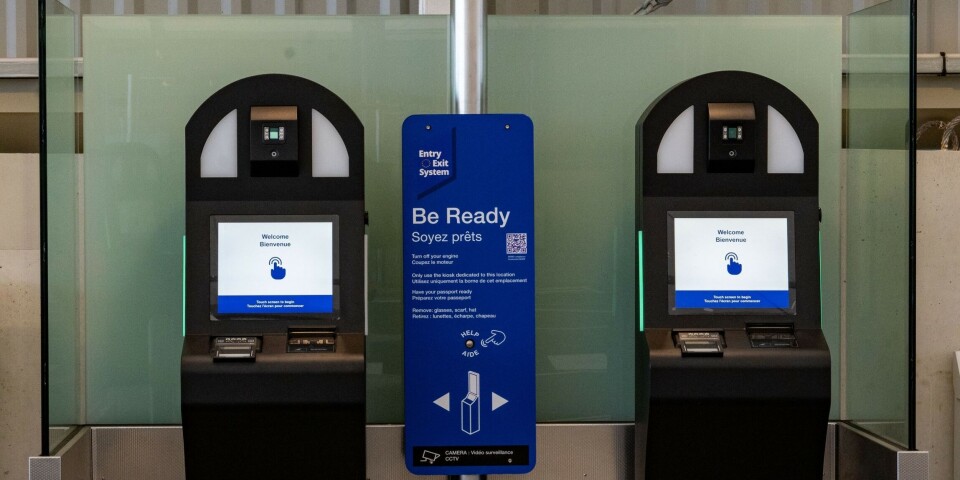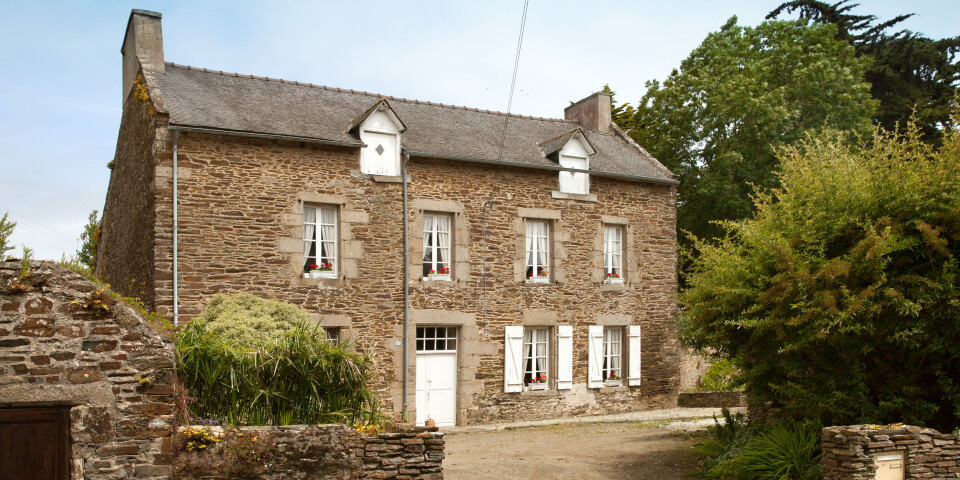-
Classic French recipe with an exotic twist: caramelised onion soup
A dish inspired by the travels of two Paris chefs
-
HPI final season: the end of a French TV phenomenon
Comedy-thriller starring Audrey Fleurot that gripped France airs final episodes
-
New French government map shows levels of chemicals in tap water
Data shows the results of some 2.3 million PFAS analyses across France
Hand drawn maps are a symbol of community
Over five years of visits to his holiday home in the Dordogne, graphic designer Keith Godard painstakingly noted the roof colours, window arrangements and design of buildings along every street of the town of Belvès to create a map that looks like it has belonged there for centuries.

Mr Godard, who owns a flourishing design studio in Brooklyn, has since captured the likeness of five other towns in the department with his intricate watercolour maps, which have been eagerly bought by residents and visitors. His latest, and most ambitious project, a map of Périgueux has just gone on sale.
Mr Godard, who was born in England and descended from Huguenots, bought his holiday home in Belvès with his architect wife, Katrin Adam.
But it was not long before life in the former postman’s house made him restless.
“I’m not very good at being a tourist, wandering around and spending a lot of money on eating and drinking.
“I wanted a project, and I looked around, went to the tourist office and there were no maps, nothing of interest, so I embarked on actually making a ‘plan de ville’.”
Because work on the map had to be split between France and the US, it took five years to complete – but it became the first of six such maps to date.
After Belvès came Monpazier, Villefranche-du-Périgord, Beynac-et-Castelnaud, Domme. With Périgueux just having gone on sale, Mr Godard has set his sights on even larger projects, but admits he will need help if he is to render Bergerac and Bordeaux with the same quality and detail of his completed maps.
The appeal of Mr Godard’s work is not hard to explain. Its hyper-realism makes aerial photography look flat.
The maps are hand-drawn, minutely detailed, subtly watercoloured, annotated, lithograph-printed and, by creating a bird’s-eye illusion of three dimensions, they seem to spring off the page.
They are exuberant and manage to be both clinically accurate and richly atmospheric.
In short, they are works of art in their own right. Mr Godard, though, is uncomfortable with the ‘A’ word, insisting that their primary function is, like that of any map, to help people navigate their way around town.
“I include all the streets – most of them – and then, working with an editor, a historian, the important buildings are chosen, usually indicated with a number and a key, so you can easily find the buildings visually.
“I’m very concerned with the usefulness of the end result.”
His meticulous research starts with the most detailed local maps and plans he can find, to establish the precise footprint of every building and parcel of land.
After deciding on an orientation which will fit the finished map into a 70 x 50 centimetres format, he uses postcards, his own photos and his skill as a draughtsman to graphically ‘extrude’ the buildings from their footprints up to what he judges to be their correct height, sometimes with a little artistic exaggeration in the case of the more important buildings.
Then, with blown-up sections of this provisional map, he puts on his walking shoes: “I actually go round, street by street, taking both visual and written notes of all the windows, and all the doors, and all the chimney pots… all sorts of things.
“Sometimes I take a photograph because certain colourings occur – such as tiled roofs and façades which can be stone or rendered.”
He has tried flying over sites in an aircraft (like the map- makers of old who used to balloon between church steeples) and admits to even occasionally using Google Maps.
But, because narrow medieval streets get lost in the shadows, he finds there is no substitute for wearing out shoe-leather.
What makes Godard maps special, though, is the magic ingredient… Look closely and, if you have ever studied art, you will notice something strange. His drawings don’t follow the conventional rules of perspective; instead, he applies the principles of isometric projection, a way of representing the world favoured by architects.
“Basically, if a building has a façade which is a certain length, behind the building the wall will be exactly the same length; it doesn’t get smaller, there’s no vanishing point,” said Mr Godard.
“It’s very convenient for measurement – you can put dimensions on it – whereas you can’t really put dimensions on a perspective drawing because the illusion is that the bits behind are smaller.”
There are also no swimming pools, which Mr Godard sees as anachronisms. He makes them abstract spaces: “They’re usually a tone of green or maybe slightly more turquoise – like gardens.’’
Before he sold those first maps of Belvès, Mr Godard persuaded the town’s mayor to prime the pump by ordering 100 copies up front. Fifteen years on, he has a distributor and has branched out into postcards.
Whether by accident or design, the full-size maps have found two separate markets.
First, there are the tourists for whom they offer both a practical guide and a take-home souvenir. And then there are the residents, for whom there is no greater boost to proprietorial pride than having a Godard map framed on the wall.
Like a school photo, it combines the general with the particular: “This is where we live and these are all our neighbours and right here is our house.”
Mr Godard says he has even been contacted by locals and asked to ‘come over and sign’ one of his maps.
With the new Périgueux
map just going on sale in the tourist office, there are more maps to come.
Although now in his 70s, Mr Godard is currently working on drawing Sarlat-la-Canéda, while Bergerac and Bordeaux remain in his sights.
Ideally, he would like to train an assistant to share the load but says there seem to be few young people with the ability to draw with the skill needed, with some even suggesting ‘doing the maps digitally’.
So, if any art or graphic design student still prefers a pencil to a keyboard and mouse, Mr Godard can be contacted at keith@studio-works.com while his maps can be found in regional tourism offices or ordered via his email address.
























